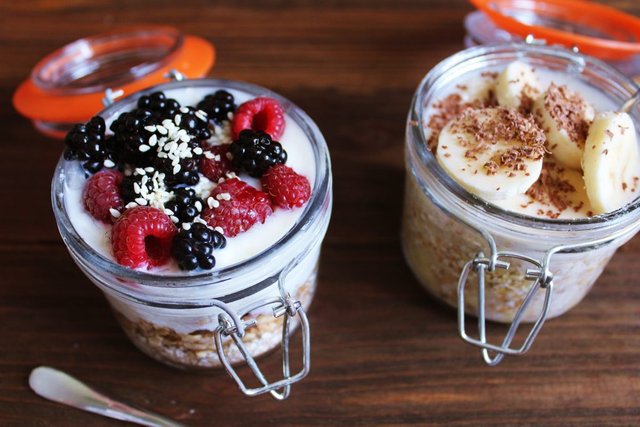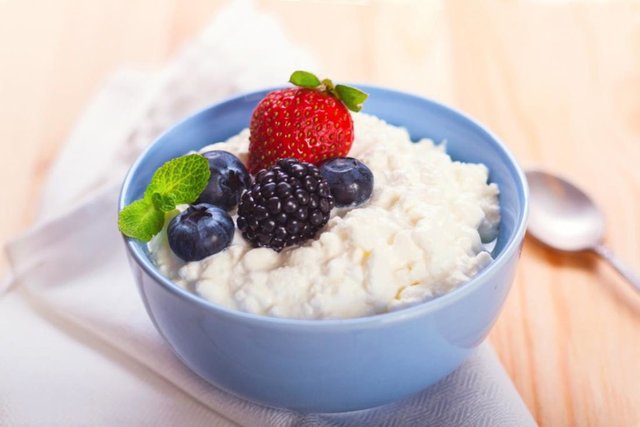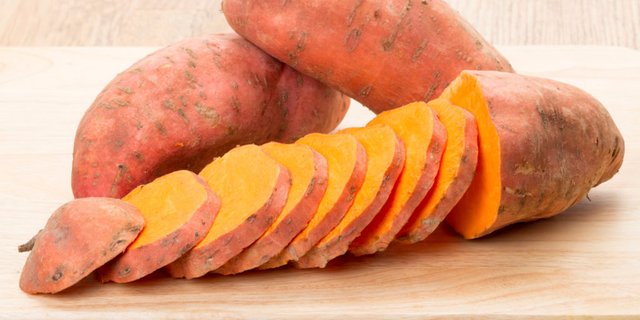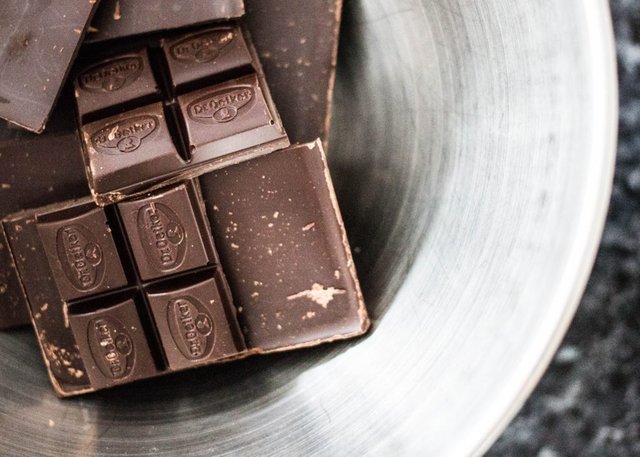8 Foods That Skyrocket Your Metabolism For Weight Loss
If your metabolism is operating at full capacity, weight loss is easy. If it's not, losing even 1 pound can be difficult. Try these 8 foods to fix it NOW!
“Boosting the metabolism” for weight loss may be the holy grail of obtaining and maintaining a lean physique. Figuratively speaking, it’s the pot of gold at the end of the rainbow.
Before getting to some of the top metabolism-boosting foods, it’s important to remind you that, in the grand scheme of things, your health, fitness, performance, and body composition are contingent on your entire body of “nutrition work”—not an individual food or single meal.
In other words, there’s no one “magical” food.
Instead of viewing foods in isolation as “good” or “bad,” think about weight management and “deep health” as the product of practicing healthy eating habits, creating a positive food environment, and choosing high-quality, nutritious foods in appropriate amounts relative to your goals and
activity levels regularly and consistently over time.
Good nutrition takes practice, and just like getting better and mastering anything in life, it’s about progress—not perfection.
With that being said, here are some of the top foods that can help ensure that your metabolism is humming full speed ahead. Enjoy!
1. Lean Red Meat (grass-fed preferred)
 Beef is loaded with protein, and when it comes to fighting the battle of the bulge, there is likely not a more important nutrient than protein.
Beef is loaded with protein, and when it comes to fighting the battle of the bulge, there is likely not a more important nutrient than protein.
As a matter of fact, researchers suggest that an increased protein intake may be one of the single most important dietary and lifestyle changes that one can make as part of an effective weight loss strategy.
Specifically, there are multiple potential beneficial outcomes associated with an increased protein intake:
- Increased satiety: Protein-rich foods induce a greater sense of satisfaction than fat- or carbohydrate-rich foods, and they may even decrease energy intake in subsequent meals;
- Increased thermogenesis: Dietary protein exerts a significantly higher “thermic effect” than fats or carbohydrates, and high-protein diets have continuously been shown to boost the metabolism (i.e., increase energy expenditure); and
- Maintenance or building of fat free mass (FFM) and preservation of metabolic rate: High-protein diets have repeatedly been shown to preserve FFM when dieting for fat loss, and they have also been shown to be necessary for the preservation of metabolic rate, which is frequently compromised as a result of dieting.
- Vitamin B1
- Selenium
- Zinc
- Niacin
- Vitamin B6
- Phosphorus
- Choline
- Iron
- Riboflavin
However, not all beef is created equally, and your best bet is to invest in the best beef that you are able to fit into your budget.
In a recent systemic review and metaanalysis published in the British Journal of Nutrition, a group of researchers critically analyzed data from 67 different studies comparing the composition of organic (i.e.,grass-fed, pasture-raised) and non-organic (i.e., conventional, grain/commodity-fed)
meat products.
They found that the beef from pasture-raised animals contained 47% more omega-3 fatty acids than conventional meat products.
This is important to note for a plethora of reasons. For instance, excessive consumption of omega-6 fatty acids coupled with a deficiency in omega-3 fatty acids is connected to an increase in a variety of negative health outcomes including:
- Cardiovascular disease
- Type 2 diabetes
- Obesity
- Metabolic syndrome
- Irritable bowel syndrome and inflammatory bowel disease
- Macular degeneration
- Rheumatoid arthritis
- Asthma
- Psychiatric disorders
- Autoimmune disease
In addition to a much healthier omega-3 fatty acid profile, research also shows that grassfed beef is one of the best dietary sources of CLA, as it contains an average of 2 to 3 times more CLA than conventional beef.
CLA possesses antioxidant activity, and research has shown it to reduce body fat, increase lean body mass, and improve body composition.
Interestingly, recent research suggests that supplementation with omega-3 fatty acids significantly increases metabolic rate.
What’s more, supplementation with omega-3 fatty acids and CLA significantly increases the body’s number of mitochondria, which are known as the muscle cells’ calorie-burning “power plants.
2. Eggs (pasture-raised preferred)
 Based on what you’ve already read, you likely realize how important protein-rich foods are to support your metabolism-boosting efforts. In addition to grass-fed beef, whole eggs from pasture-raised hens should be at the top of your list.
Based on what you’ve already read, you likely realize how important protein-rich foods are to support your metabolism-boosting efforts. In addition to grass-fed beef, whole eggs from pasture-raised hens should be at the top of your list.
In addition to packing 7 grams of satiating protein, a single egg is also loaded with several critical nutrients including:
- Choline, which supports brain health and nervous system function
- Lutein and zeaxanthin, which are potent antioxidants that fight free radicals and help prevent macular degeneration
- Vitamin A
- Vitamin D
- Selenium
- Phosphorus
- Potassium
- And more
Editors Note: Eggs is just one of the 14 foods that will BOOST your Thyroid.
Learn which 14 common foods BOOST your thyroid and flatten your belly in this 27 Page FREE Report…
Today we’re GIVING it away 100% FREE! >> Click Here For The FREE Report!
What’s more, when you choose pasture-raised eggs (which are laid by hens that get to spend their days outside on fresh pastures—not cooped up in small cages or huddled by the thousands in cage-free barns), you’ll get the added benefit of eggs higher in the
same omega-3 fats found in grass-fed beef.
Research from Mother Earth News demonstrated that eggs from pasture-raised hens provide a significantly improved nutrition profile compared to standard store-bought eggs, including 2 TIMES more omega-3 fatty acids.
In the same series of studies, the researchers found that pasture-raised eggs contained SIX times more vitamin D than traditional eggs.
Even more, while all eggs are a good source of vitamin A, pastureraised eggs contain over 67% more compared to conventional eggs, including SEVEN times more beta-carotene.
Pasture-raised eggs were also found to contain THREE times more vitamin E.
Since eggs are synonymous with breakfast, this is as good a time as any to remind you to include protein at your first meal of the day.
Research suggests that the satiety effects of a high-protein breakfast will have far-reaching implications on your appetite and waistline.
In a recent study, researchers from the University of Missouri found that people who ate a high-protein breakfast (e.g., eggs and lean beef) felt more full, had fewer cravings, and were less likely to snack on high-fat and high-sugar foods at night, compared with a
group who ate a calorically equivalent bowl of cereal.
What’s more, over the course of 12 weeks, researchers found that consuming a similar high-protein breakfast (including 35 grams of protein) prevented fat gain, decreased hunger, and reduced daily calorie intake.
Multiple other studies comparing a high-protein breakfast (e.g., 30+ grams of protein) to a breakfast of ready-to-eat cereal have also shown similar benefits in satiety, appetite, hormonal responses, and subsequent food choices.
3. Plain Greek Yogurt and Cottage Cheese (organic preferred)
 If the metabolism-boosting benefits of a highprotein diet have not yet been extolled upon you, please allow us the opportunity to remind you that a diet rich in high-quality protein has wellestablished scientific support as a successful strategy to promote weight loss and weight management in adults, as high-protein diets have regularly been shown to result in greater losses in fat mass, maintenance or building of fat free mass, improved body composition, and preservation of metabolic rate when dieting.
If the metabolism-boosting benefits of a highprotein diet have not yet been extolled upon you, please allow us the opportunity to remind you that a diet rich in high-quality protein has wellestablished scientific support as a successful strategy to promote weight loss and weight management in adults, as high-protein diets have regularly been shown to result in greater losses in fat mass, maintenance or building of fat free mass, improved body composition, and preservation of metabolic rate when dieting.
Interestingly, the body composition benefits (i.e., preservation of lean body mass, reduction of body fat) associated with high-protein, reduced-calorie diets may be further enhanced when dairy is a major component of the diet.
In one study published in the Journal of Nutrition, researchers from McMaster University found that folks who consumed a dairy-rich (15% of total energy intake), high-protein (30% total energy intake) diet, lost more body fat, visceral fat, and trunk fat over the course of 16 weeks when compared to individuals consuming a standard protein intake and either moderate (7.5%) or low (2%) levels of dairy.
What’s more, the high-dairy, highprotein group also gained lean body mass while losing body fat (and net body weight).
Greek yogurt contains more than double the protein compared to regular yogurt and only about one-third the amount of sugar.
Even more, authentic strained Greek yogurt is rich in multiple sources of probiotics. Research indicates that the gut flora (i.e., the bacterial ecosystem) of obese folks differs significantly from that of thin people.
Along these lines, recent research published in the British Journal of Nutrition suggests that certain probiotics from the Lactobacillus family of bacteria, which are prominent in Greek yogurt, may help you lose weight and keep it off.
When choosing a Greek yogurt, it’s best to opt for plain versions, as fruit-flavored varieties have over three times as much sugar.
Instead, add some low-energy-dense fresh fruits (e.g., berries), which will provide a nutrient-dense source of fiber, vitamins, and antioxidant phytochemicals.
Cottage cheese goes hand-in-hand with Greek yogurt. Cottage cheese packs a whopping 28 grams of protein per single cup, and it is also a good source of calcium, riboflavin, vitamin B12, selenium, and phosphorus. Cottage cheese is rich in casein protein, which is known as a slow-digesting protein.
 In fact, studies show that levels of amino acids remain elevated upwards of 5 hours after ingestion of casein protein.
In fact, studies show that levels of amino acids remain elevated upwards of 5 hours after ingestion of casein protein.
While whey, a fast-digesting protein, is often thought of as the “gold standard” of protein supplements, some studies suggest that casein—or a combination of whey and casein—may provide greater muscle building and recovery benefits.
In animal studies, scientists have found that, compared to whey, casein protein provides a more sustained anabolic (i.e., building) effect.
Recent research in humans demonstrated that a blend of whey and casein is superior to whey protein alone after resistance training to promote muscle protein synthesis and recovery.
Furthermore, scientists recently demonstrated that casein protein provides muscle recovery benefits during sleep when consumed before bed.
One cup of cottage cheese also packs a healthy punch of branched-chain amino acids (BCAAs), including over 2 ½ grams of leucine, which is essential to muscle health.
BCAAs are crucial to exercise performance, muscle recovery, and supporting carbohydrate metabolism.
The amino acid leucine is considered to be the “anabolic trigger” for muscle recovery and growth, and there appears to be a “threshold” (around ~3 grams per meal) for maximizing muscle protein synthesis.
When choosing Greek yogurt and cottage cheese (and other dairy), it’s a good idea to opt for organic.
In a recent systemic review and meta-analysis published in the British Journal of Nutrition, researchers reviewed the results of 170 published studies comparing the nutrient composition of organic (i.e., grass-fed, pasture-raised) to conventional (i.e., grain/commodity-fed) dairy.
Compared to conventional dairy, the researchers found that dairy from pasture-raised cows was 56% higher in omega-3 fats (EPA, DHA, DPA), which help promote a healthy inflammatory response and enhance immune system function.
What’s more, organic dairy contained 69% more conjugated linoleic acid, which, as previously mentioned, has been shown to preferentially modulate body composition, enhance immunity, and promote a healthy inflammatory response.
4. Sweet Potatoes
 In recent years, while the regular potato has been shunned (undeservedly so, however), the sweet potato has reigned supreme as a “superfood,” a term that gets thrown around a lot, leading you to believe that there are single foods that can make or break your health and fitness goals.
In recent years, while the regular potato has been shunned (undeservedly so, however), the sweet potato has reigned supreme as a “superfood,” a term that gets thrown around a lot, leading you to believe that there are single foods that can make or break your health and fitness goals.
As mentioned in the introduction, the truth is that there is no “magic bullet,” and deep health is the by-product of choosing high-quality, nutritious foods in appropriate amounts, creating a positive food environment, engaging in regular physical activity, practicing stress management, optimizing sleep hygiene and quality, adequately hydrating, and building and maintaining healthy relationships.
Indeed, there are a number of “Big Rocks” that go into the jar of getting (and staying) lean and healthy, and certainly one of those is regularly and consistently eating wholesome and nutritious foods.
So while the promise of superfoods may be a little far-fetched, the guidance to eat more nutrient dense foods is not, and when it comes to foods with a high nutrient density, sweet potatoes—which are healthy, awesome, and delicious—do seem to fit the bill.
They’re a very good source of a number of vitamins and minerals including several B vitamins, which are essential for producing energy, increasing feelings of well-being, and stoking the metabolism:
- Vitamin A
- Vitamin C
- Manganese
- Copper
- Pantothenic acid
- Vitamin B1, B2, B3, B6
- Biotin
- Potassium
- Phosphorus
Simply put, fiber is a nutrition all-star. Dietary fiber promotes a healthy digestive tract, regularity, improves carbohydrate management (e.g., slowed gastric emptying), promotes satiety, reduces calorie intake, and enhances weight loss.
Unfortunately, most people don’t consume nearly enough dietary fiber. According to the American Dietetic Association, the average American consumes a paltry 15 grams of dietary fiber per day, only about HALF of the recommended daily intake.56 As you might have imagined, researchers have linked low fiber intakes to increased risk for diabetes and obesity.
In a review study, researchers at the Human Nutrition Research Center on Aging at Tufts University found that simply increasing fiber intake by 14 grams per day for at least two days can result in an 18% decrease in calorie intake, and over the course of 4 months, that simple dietary intervention was associated with an average weight loss of more than 5 pounds.
Like regular potatoes, sweet potatoes are highly satiating, and when it comes to the battle of the bulge, one of the most important factors to consider is satiety, which refers to feeling full and satisfied.
Thus, when trying to control calories (i.e., negative energy balance), it’s important to choose foods that are highly satiating.
No one likes to be hungry, which is all too common when trying to eat less. Along these lines, some authors refer to satiety as the “new diet weapon.”
Research suggests that people may not limit how much they consume based on calories alone. Specifically, feeling full (i.e., satiety) is a major reason that people stop eating.
In other words, rather than the calorie content of food, the volume of food that is consumed at a meal is what makes people feel full and stop eating.
In fact, research strongly suggests that how much you eat daily is regulated by the weight of the food rather than by a certain number of calories.
Understanding the importance of feeling full, Dr. Susanna Holt and her team of researchers at the University of Sydney set out to establish a satiety index of common foods.
In the study, the researchers fed participants fixed-calorie portions of thirty-eight different foods and subsequently recorded their perceived hunger following each feeding.
The results of the study, like many similar studies, indicate that satiety is most strongly related to the weight of the food consumed.
In other words, the foods that weigh the most satisfy hunger best, regardless of the number of calories they contain.
Of pertinence to this conversation, potatoes scored highest on Holt’s satiety index, over 40% higher than any other food tested.
In addition, Holt and her colleagues found that higher amounts of certain nutrients, such as protein, dietary fiber, and water content, also correlated positively with satiety scores—lending more credence to building a nutrition plan around low-energy-dense and protein-rich foods.
In one study published in the American Journal of Clinical Nutrition, researchers from the University of Alabama confirmed that feeling full is more likely to make an individual stop eating than the number of calories consumed.
In the study, participants were permitted to eat as much as they wanted over the course of 5 days, and their menu options alternated from low-energy-dense, highly satiating foods to high-energy-dense, less satiating foods.
On the low-energy-density diet, the folks ate only about HALF of the calories (1570) that they consumed before feeling full compared with the highenergy-density diet (3000 calories).
In another study published in the American Journal of Clinical Nutrition, researchers from the CDC found a clear association between dietary energy density, satiety, overall calorie intake, and body weight amongst over 7,000 study participants.
Men and women who consumed a diet rich in low-energy-dense, highly satiating foods consumed between 275 – 425 fewer calories per day than did those folks who opted for more highenergy-dense foods; not only that, the men and women eating more low-energy-dense foods consumed upwards of 14 MORE ounces of food per day (that’s almost a pound).
Not surprisingly, the folks who ate more low-energy-dense foods like vegetables had healthier body weights (i.e., lowest prevalence of obesity).
A number of other studies have confirmed these findings—diets rich in low-energydense foods that promote satiety help reduce hunger and decrease overall calorie intake.
What’s more, long-term studies have shown that low-energy-dense diets also promote weight loss. In fact, studies lasting longer than 6 months show that folks who eat more low-energy-dense foods experience THREE TIMES greater weight loss than people who simply opt to reduce calories.
5. Coconut Oil (cold-pressed, extra virgin)
 While extra virgin olive oil has always been (and will continue to be) a staple, nutritious, go-to oil for healthy cooking, there’s a new kid on the block that’s getting all the attention as of late, and for good reason.
While extra virgin olive oil has always been (and will continue to be) a staple, nutritious, go-to oil for healthy cooking, there’s a new kid on the block that’s getting all the attention as of late, and for good reason.
Coconut oil, which is actually 90% saturated fat, is the new superstar, but it hasn’t always been viewed as healthy.
Perhaps some of the negative light that has previously been shined on coconut oil is somewhat deserved. According to Alexandra Bernardin:
“For years, coconut oil was portrayed as a destroyer of cardiovascular health. Its artery-clogging, heart attack-causing, cholesterol-raising side effects were flaunted in the media, and the public responded by shunning this useful and natural oil. However, researchers made one big mistake, which they conveniently did not publicize: In their studies, they used hydrogenated and partially hydrogenated coconut oil. By doing so, they changed everything good about coconut oil.”
For sake of reference, hydrogenation essentially refers to the fact that these were trans fats that were used, and of course, coconut oil is going to get a bad rap if it’s being chemically warped into this health-derailing nightmare (i.e., trans fats). But, what happens when we use fresh, cold-pressed, extra-virgin coconut oil? We get an allnatural food that is chockfull of health-building saturated fats.
According to Bernardin, here are some of the top reasons you should include coconut oil in your diet:
- It’s composed of medium chain triglycerides (MCTs), which your body can quickly and efficiently use for energy and are not stored in the body as fat.
- Like breast milk, coconut oil is high in the fatty acid lauric acid, which plays a critical role in immune system function.
- It is antiviral, antifungal, antiparasite, and antiprotozoa.
- Coconut oil is high in capric acid and caprylic acid, which are antioxidants.
- It is cardioprotective. Populations that consume 30-60 percent of their daily caloric intake from coconuts are virtually free from cardiovascular disease, and it helps to lower cholesterol.
- Unlike unsaturated vegetable oils like soybean and corn oil, coconut oil does not block the secretion of thyroid hormone.
- Coconut oil is easily digested and can support healthy digestive function.
- Coconut oil helps with zinc and magnesium absorption, two very important minerals vital for a multitude of functions in the body including bone health.
Editors Note: While high-fat foods have been demonized by the mainstream media, did you know that there are actually 4 specific fatty foods that are proven to ACCELERATE fat-burning?
It’s true, and even better, I show you all four at the link below…
=> 4 high-fat foods that ACCELERATE fat-burning
In addition, several studies have linked the consumption of extra virgin coconut oil to smaller waist sizes.
For example, researchers found that subjects who consumed two tablespoons of coconut oil per day for 12 weeks while following a reduced-calorie diet and including daily exercise (i.e., walking) lost a significant amount of abdominal fat compared to the control group that followed the same diet and exercise program without coconut oil.
In addition, the coconut oil group also experienced an increase in HDL cholesterol and a decrease in their LDL:HDL cholesterol ratio.
The researchers concluded, “Supplementation with coconut oil does not cause dyslipidemia and seems to promote a reduction in abdominal obesity.”
What’s more, research also suggests that the MCTs found in coconut oil have a significant thermogenic (i.e., metabolism-boosting) effect.
In one study, rats were overfed with either long-chain fatty acids (LCTs), which are the common form of fat found in foods, or MCTs.
The rats fed the MCTS gained 20% less weight and 23% less body fat despite consuming the same overall amount of energy.
In another study, researchers found that consuming MCTs increased metabolism more than eating LCTs from other foods.
As a matter of fact, the subjects that consumed MCTs lost significantly more weight and burned more fat than the group consuming LCTs.
Researchers have also found that consuming just 1 – 2 tablespoons daily of MCTs can elevate the metabolism by as much as 5%, which may mean burning an additional 150 calories or more just by swapping your oils.
6. Green Tea
 If your goals are to lose fat and add calorie-burning lean muscle mass—and who doesn’t want to do that—then, besides plain, filtered water, your beverage of choice should be green tea.
If your goals are to lose fat and add calorie-burning lean muscle mass—and who doesn’t want to do that—then, besides plain, filtered water, your beverage of choice should be green tea.
According to researchers, Camellia sinensis, which is the plant species whose leaves and buds are used in the production of tea, exerts several “antiobesity effects.”
Although various types of teas (e.g., oolong, black, green) all come from the Camellia sinensis plant, green tea leaves are processed (i.e., fermented) differently, which leaves them with a higher concentration of beneficial polyphenols called catechins, and it’s these compounds, which also have noteworthy anti-inflammatory and antioxidant properties, along with green tea’s naturally-occurring caffeine that seem to have quite a potent effect on the metabolism and helping reduce body fat.
Specifically, green tea extracts standardized for the catechin epigallocatechin gallate (EGCG) and caffeine have been shown to increase the rate of fat oxidation (i.e., fat burning) at rest and during exercise.
In one study, subjects that took a green tea extract, which contained both caffeine and EGCG, three times per day increased both thermogenesis (i.e., metabolic rate) and fat oxidation over the course of 24 hours.
The authors stated that the effect was superior to that witnessed by caffeine alone.
Subsequently, researchers have found that consumption of a green tea extract prior to exercise increased the amount of fat burned during the bout of training.
What’s more, the researchers also noted improvements in blood sugar management and insulin sensitivity.
Overall, researchers have concluded, “A green tea-caffeine mixture improves weight maintenance, through thermogenesis, fat oxidation, and sparing fat free mass.”
In addition to an increased metabolic rate, heightened fat oxidation, and improved blood sugar and insulin sensitivity, green tea consumption has also been found to decrease appetite and help regulate blood triglycerides.
Researchers suggest consumption of 2 – 4 cups (i.e., 500mL – 1L) of green tea per day to reap these fat-burning and health promoting benefits.
Editors Note: While green tea has great benefits there is actually a tea that is much better.
Try this bedtime belly busting tea and melt away 1 pound of body fat by tomorrow morning.
Trust me...it tastes great, hot or cold, and you can make it at home RIGHT NOW with ingredients you have in your cupboard!
==> Bedtime Belly Busting Tea Melts Away 1lb of Fat Overnight!
7. Coffee
 Coffee is one of the world’s most consumed drinks, trailing only water and tea, although the latter is often debated.
Coffee is one of the world’s most consumed drinks, trailing only water and tea, although the latter is often debated.
Despite its popularity, coffee seems to be a somewhat contentious beverage, as it is frequently considered “unhealthy.”
However, there’s seemingly more research to suggest the opposite, as there are a multitude of health benefits associated with regular coffee consumption, and amongst them is an increase in metabolic rate.
Research over the past several years suggests that coffee consumption may protect against type 2 diabetes, Parkinson’s disease, liver cancer, and liver cirrhosis.
It’s important to point out that studies suggesting these benefits are observational in nature, which means that they don’t necessarily prove that coffee caused the effects.
Here’s a sampling of some of the health benefits associated with regular coffee consumption:
- Research suggests that regular coffee consumption is associated with a substantially lower risk of type 2 diabetes.
- Some studies have shown an inverse relationship between coffee consumption and Alzheimer’s disease, suggesting that coffee may have protective benefits against dementia. Recent reports estimate that moderate coffee consumption may lower the risk of Alzheimer’s by as much as 20%.
- Studies have shown that coffee drinkers have a significantly lower risk of developing Parkinson’s disease.
- Recent research on coffee and mortality performed by scientists from the Harvard School of Public Health found that people who regularly drank coffee had a lower risk of death from cardiovascular disease than those who rarely drank coffee.
But it’s actually a very complex beverage with hundreds and hundreds of different compounds in it. In fact, a cup of coffee contains all of the following essential nutrients:
- Pantothenic Acid (Vitamin B5)
- Riboflavin (Vitamin B2)
- Niacin (Vitamin B3)
- Thiamine (Vitmain B1)
- Potassium
- Manganese
Of course, coffee is synonymous with caffeine, and there may be a host of benefits—including metabolism-boosting advantages—associated with caffeine consumption.
For instance, coffee consumption increases alertness and energy levels, and studies have shown that coffee consumption can improve performance on mental tasks.
In addition, studies have found that coffee can improve mood, feelings of well-being, reaction times, vigilance, and cognitive function.
Caffeine is also widely studied from a sports performance standpoint, and it has been shown to significantly improve physical performance and reduce perceived levels of exertion (i.e., makes tasks feel easier) when taken before exercise.
From a metabolism standpoint, studies show that coffee consumption significantly increases metabolic rate.84 In fact, consuming as little as 100mg of caffeine, which you can get from a single cup of coffee, is enough to boost metabolic rate, and it appears that repeated/greater doses lead to an even more pronounced effect.
What’s particularly interesting is that this increase in resting metabolic rate is accompanied by greater oxidation of fat. Simply put, coffee and caffeine appear to boost metabolic rate and increase fat burning.
While there are many health and metabolism benefits associated with regular, moderate coffee consumption, it’s important to assess and consider your tolerance to caffeine.
Individual differences in caffeine metabolism apply, and genetically, some folks are “slow” caffeine metabolizers, which makes them more sensitive to the stimulatory effects (e.g., jitters, feeling wired) of the compound.
8. Dark Chocolate
 Who doesn’t like dessert? For the most part, nearly all desserts are heavily processed and are rife with refined sugars and inflammatory fats. Simply put, they are not a great option to help you lose fat, boost your metabolism, or optimize your health.
Who doesn’t like dessert? For the most part, nearly all desserts are heavily processed and are rife with refined sugars and inflammatory fats. Simply put, they are not a great option to help you lose fat, boost your metabolism, or optimize your health.
But, what if you could literally have your cake and eat it too? Well, with high-quality dark chocolate, you may be able to do precisely that.
Perhaps a more suitable title for this section would be cocoa, as it’s actually cocoa that seems to possess significant health and metabolism-boosting benefits.
Cocoa contains up to three times more antioxidants than green tea, and it’s these polyphenols that appear to be responsible for the health-conferring benefits of cocoa.
Cocoa, and therefore dark chocolate, is rich in a compound called theobromine, which structurally belongs to a family of compounds collectively referred to as xanthine alkaloids.
Also included in this family is caffeine, and as you now know from the section above, caffeine effectively boosts the metabolism and increases fat burning.
Theobromine possesses mild stimulant qualities similar to caffeine, and cocoa typically contains about 10 times as much theobromine as caffeine.
Like caffeine, theobromine has been shown to have some unique fat loss properties.
As is the case with other methylxanthines, theobromine has been shown to suppress the appetite (i.e., anorexia).
With dark chocolate, this is an especially nice effect, as a relatively small amount will help control both hunger and your cravings for sweets.
Also similar to caffeine and other methylxanthines, theobromine has been shown to increase lipolysis (i.e., the break down of fat), which means it has the potential to heighten your fat-burning abilities.
What’s more, researchers have found that theobromine can increase fatty acid utilization during exercise, which means more fat burning and, under certain conditions, improved performance.
A very distinct benefit of the polyphenols found in dark chocolate was discovered in a study published in The American Journal of Clinical Nutrition where researchers found significant insulin sensitivity benefits associated with the naturally-occurring polyphenols found in dark chocolate rich in cocoa.
And, as you likely already know, insulin sensitivity is a critical piece of the puzzle when it comes to fat burning, as it holds a key to unlocking your body’s ability to burn fat effectively.
Remember, cocoa is not a chocolate bar, something whose added ingredients and processing reduce the number and type of flavonols, increase calories (cocoa itself has very few), and possibly change the physiological response to the cocoa.
As researcher Dr. Andrew Neilson, assistant professor at Virginia Tech states, “The evidence does not show that you can eat a chocolate bar every day and expect to improve your health.”
Keep the following in mind when searching for a dark chocolate bar:
Generally speaking, the higher the cocoa content the better. As you move down the “healthy” scale of dark chocolate bars (from highest to lowest cocoa content), you’ll typically find more calories and sugar and less protein and fiber (as well as fewer flavonols).
Thus, you should choose a dark chocolate bar with the highest possible cocoa content, and clearly, 100% cocoa will be your best bet.
When enjoying dark chocolate, a couple of squares should do the trick, as it still packs a significant amount of calories.
Bonus Booster: Hot Peppers
 Like protein and compounds found in coconut oil, green tea, coffee, and cocoa, hot peppers also appear to effectively boost the metabolism.
Like protein and compounds found in coconut oil, green tea, coffee, and cocoa, hot peppers also appear to effectively boost the metabolism.
That’s right, the same compound that makes certain foods spicy can also turn up the heat on your metabolism, helping burn more calories and torch unwanted body fat.
You see, hot peppers contain a compound called capsaicin, and observational studies suggest that consumption of foods containing capsaicin is associated with lower body weight.
Research has shown that capsaicin can boost metabolic rate, accelerate fat burning, decrease fat storage, increase feelings of fullness, reduce appetite, and decrease calorie intake.
One unique way that capsaicin appears to increase calorie burn is through activation of “brown fat,” which is different from unwanted body fat (also called white adipose tissue).
The purpose of brown fat is to burn off calories as heat in order to keep the body warm, and capsaicin’s ability to “activate” stubborn brown fat is a cutting-edge way to boost metabolism and burn body fat.
Not only that, capsaicin appears to activate a compound in the body called AMPK, which helps partition carbs to muscle, not fat.96,97 Activation of AMPK also increases fat burning and reduces the body’s ability to create and store fat.
Shuttle carbs to muscles, burn more fat, and store less…sounds pretty awesome, right?
With all of that in mind, you might consider spicing up your meals a bit with cayenne, jalepeño, habanero, and other hot peppers.
Basically, the hotter the pepper, the greater the capsaicin content, and if you’re feeling especially spicy, then you might try the bhut jolokia pepper (aka, the “ghost pepper”), which is so hot that it is often used as an elephant repellant in India!
Spark the Fire
With all of this at your disposal, you now have the figurative lighter to spark your metabolic fire.
A good place to start is to make sure that you’re consuming plenty of protein-rich foods, and you might consider replacing some carbohydrates with those foods shared in the list above.
While you’re at it, you might try cooking those foods with coconut oil to further enhance your metabolism. Of course, you could start or finish your meal with some green tea or coffee to fully optimize the metabolism advantage.
Call to Action
Now that you know the 8 foods that will boost your metabolism, how would like to start off your New Year with your FASTEST fat loss week EVER?
Well, with the right strategy… you CAN.
It’s all laid out for you step-by-step inside this brand new article, "5 PROVEN principles to your FASTEST Fat Loss Week EVER!
Always remember this when you diet: weight loss and fat loss are two critically different things.
Want to lose a lot of weight in a short period of time? You certainly can, and here are the inevitable results:
- A lot of water loss
- Substantial muscle loss
- A tad bit of fat loss
But now ALL this can be avoided. Just follow these 5 PROVEN principles on the following page below:

